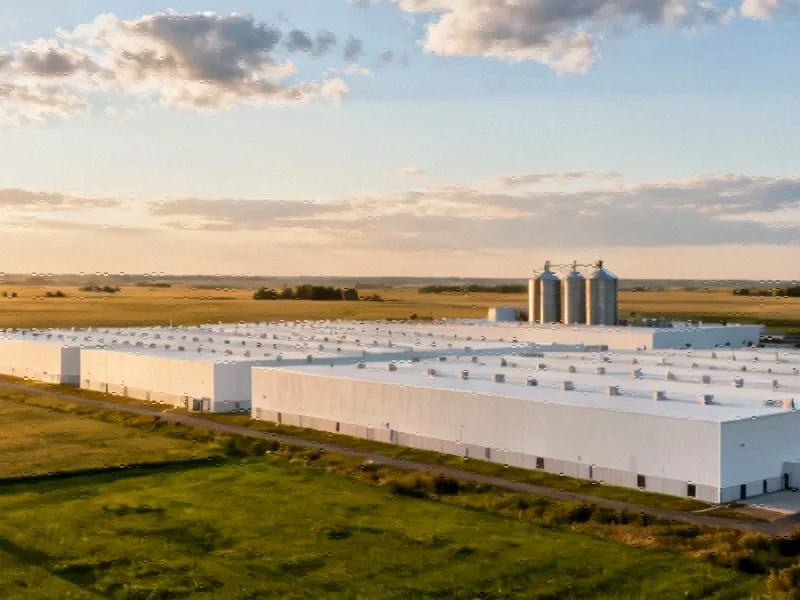Project Skyway: A Transformative Data Center Initiative
Pine Island, Minnesota, is poised to become a significant player in the data center industry with the proposed development of a 482-acre campus known as Project Skyway. The initiative, unveiled during a community open house and city council forum on October 7, represents one of the largest potential data center projects in the state. This development could dramatically alter the technological landscape of southeastern Minnesota, bringing both opportunities and challenges to the forefront.
Site Specifications and Development Timeline
The proposed facility, to be developed by Ryan Companies, is planned for a parcel bounded by 490th Street to the north, Trunk Highway 52 to the west and south, and 195th Avenue to the east. According to the project’s Alternative Urban Areawide Review (AUAR), the data center could feature up to three stories, encompassing approximately 3 million square feet of floor space. This scale positions it among the major data center developments in the Midwest.
Ryan Companies has not yet submitted formal development plans to the City of Pine Island, and the site remains outside city limits, pending annexation. The developer’s project website indicates that development applications are expected by the end of 2025, suggesting a carefully phased approach to regulatory approvals and construction. This timeline allows for thorough community engagement and environmental assessments, aligning with broader industry trends in sustainable development.
Energy and Infrastructure Commitments
Xcel Energy has been designated as the utility provider for Project Skyway, underscoring the project’s reliance on established regional energy infrastructure. The developer has committed to covering all costs associated with infrastructure upgrades required for large-scale customers, ensuring that utility bill increases will not be passed on to existing residents as a direct result of this development.
Water usage is projected at around 152,000 gallons per day, a figure that has drawn attention given the increasing focus on resource efficiency in data center operations. This highlights the importance of advanced resource management strategies in modern industrial projects.
Community Response and Environmental Considerations
While the project promises economic benefits, it has faced opposition from some community members concerned about noise pollution, environmental impact, and potential cost escalations. These concerns reflect a growing public awareness of the trade-offs involved in large-scale industrial developments.
Ryan Companies, a Minnesota-based real estate developer founded in 1938, is concurrently pursuing data center projects in Phoenix, Arizona, and Minneapolis, Minnesota. Their experience with complex industrial projects could inform their approach to addressing community concerns in Pine Island.
Regional Context and Economic Implications
Pine Island’s location northwest of Rochester places it in a region increasingly attractive for technology investments. While most of Minnesota’s data centers are concentrated in the Minneapolis area, Project Skyway could signal a strategic expansion into new territories, potentially influenced by evolving connectivity and resilience requirements in the digital infrastructure sector.
The scale of Project Skyway invites comparisons to other ambitious technological undertakings, though its focus remains firmly on terrestrial data processing and storage capabilities that support modern digital economies.
Broader Industry Connections
The development of large-scale data centers like Project Skyway intersects with numerous technology sectors. For instance, the computational demands of such facilities often drive innovations in computing education and workforce development. Similarly, the secure operation of these critical infrastructure assets relies on advanced communication and security protocols that protect sensitive data and operations.
Looking Ahead: Balancing Growth and Community Values
As Pine Island considers this transformative project, the community faces fundamental questions about growth, sustainability, and technological progress. The outcome of Project Skyway could establish important precedents for how rural communities across America engage with the expanding digital infrastructure landscape.
The careful balancing of economic opportunity with environmental stewardship and quality of life concerns will likely shape the final development agreement, reflecting evolving best practices in community-industrial partnerships nationwide.
This article aggregates information from publicly available sources. All trademarks and copyrights belong to their respective owners.
Note: Featured image is for illustrative purposes only and does not represent any specific product, service, or entity mentioned in this article.
